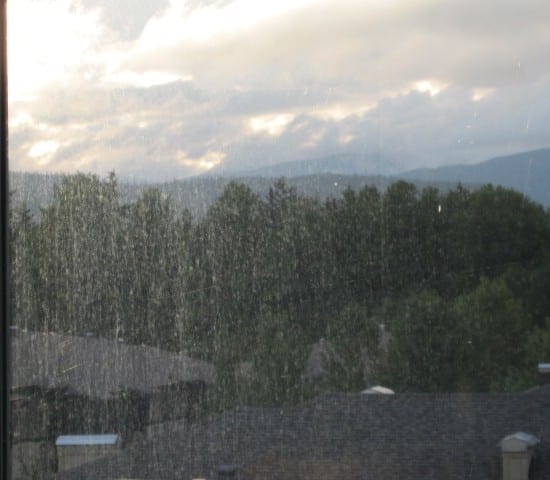Windows – Mineral Deposit Staining
Hopefully, you haven’t seen this on your windows – milky drips or streaks that won’t come off. They’re translucent, most visible in direct sunlight, and most noticeable right after your windows have been cleaned. You can complain and have the window cleaner come back – but watch him scrub the glass, and these marks still don’t disappear. These are mineral deposits staining your window.
These marks are an assortment of minerals leached over time from mortar and concrete by the rain. When the rain strikes the building then runs down the surface of the glass, it leaves these residues behind. They adhere to the porous surface of the glass, building up in vertical streaks or running water patterns over time, and gradually adhering and becoming permanent. They can also look like spatter marks if rainwater hits a concrete ledge below your window and bounces back up on to the glass. The longer those minerals stay on the window, the more visible the build up becomes and the more difficult to remove. The good news: mineral deposit stains are removable in most cases if you catch them in time.
There are solvents designed to combat these stains, and we have the know how to use them. Combined with razors, glass scrubbing pads, and effort, mineral deposits can be greatly reduced and in most cases removed. However, the degree that they stain and etch themselves into the glass worsens over time. If they’ve been sitting on the glass for more than two years, they may not be able to be removed completely. After several years, the appearance may only be improved by up to 80 – 90%. In these cases, the best way to bring back crystal clarity to your view through the glass: install new glass.
So, in order to ensure these mineral deposits to not occur, take the following steps:
- Wash the exterior surface of windows at least once per year
- If any mineral deposits appear to be on the glass, get a professional to remove them – sooner rather than later
- Install a drip cap above the window, or extend this awning like guard to prevent water from dripping down the glass when it rains.
- Lower window ledges that are concrete should be treated with a sealant or covered: paint them, put a planter over it, or just be aware to keep the lower half of your window clean. (Clean it at least once or twice per year)
If you have mineral deposit staining on your glass, and need to get it out, contact ServiceMaster Clean Residential: We’ll take care of it.







